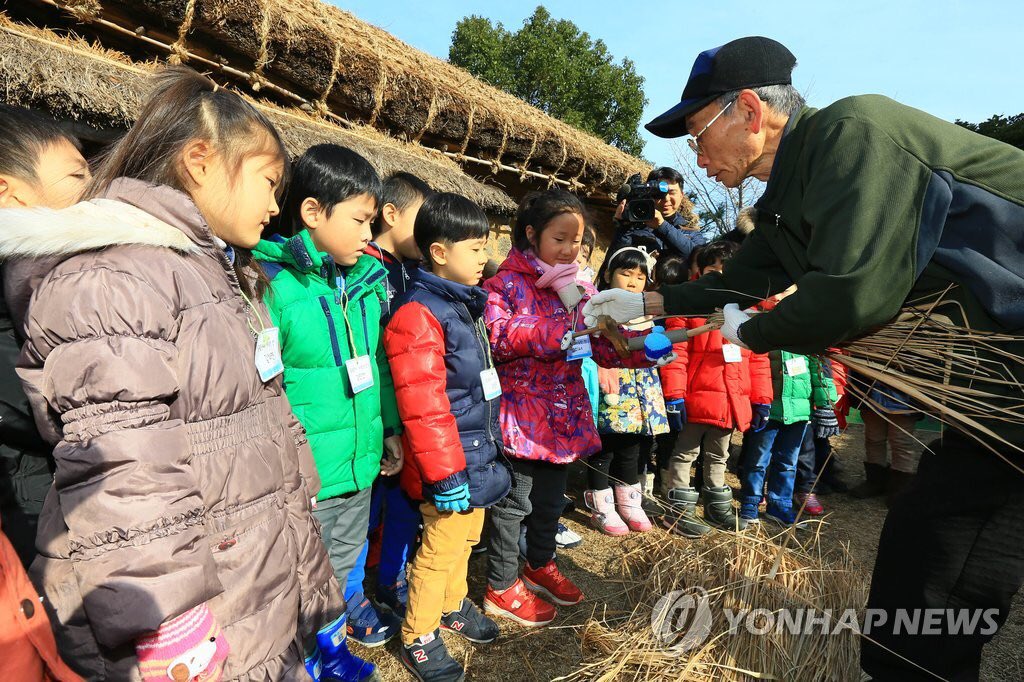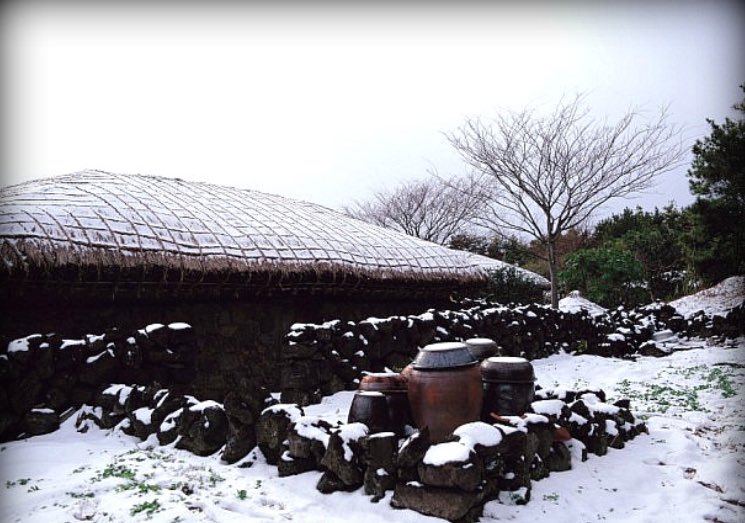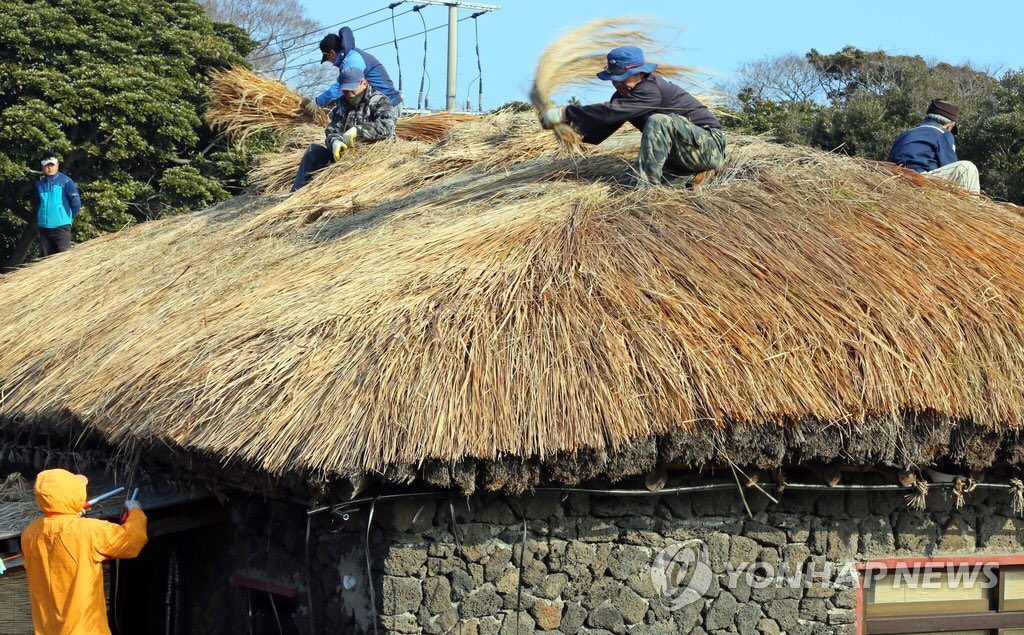Every building technology is ultimately a compromise. Hundreds of factors weigh in. Faced with similar situations, vastly different cultures will reach the same conclusions: take the thatched roofs of the N. Atlantic Hebrides and those of Jeju Island in the Korea Strait for ex. 



Both areas are characterized mostly by strong winds and relatively meager soils. Hence roofs were thatched (which grows amply on poor soils) and built with a low angle (nearly flat) with an oblong shape weighed or tied down with a net of rope to minimize the effect of winds. 



Normally the primary purpose of a roof is to shed water but here that job had to take second place: longevity is sacrificed in order to ensure that roofs can survived hurricane or typhoon strength winds. Rain permeates the thatch so in the case of Jeju, they only last 1-2 years. 

The short lifespan of a Jeju roof is no problem. Nature has provided it so neatly that the thatch used is best cut in December when agricultural activity is at a nadir. Anyone can help, technically simple, the ropes of an average roof for example take four people one day to make. 





Another bonus is that the thatch is perfect in the hot and humid summers with cold winters on Jeju Island: the thatch keeps the summer heat from penetrating into the interior of the home and in winter it isolates the heat from people and stoves. 



When the roof is relaid the bad parts are thrown out and the new thatch easily spread over the existing roof. Nothing goes to waste: the old thatch is thrown into the household pigpen where it mixes with manure and is then carted to the fields and gardens to make free fertilizer. 







But the final bonus is that the very act of thatching a roof becomes a communal village event where people get together and help each other, strengthening the ropes on your neighbor's house literally strengthens the bonds between your families. This is mostly a lost art today. 







The houses of Jeju Island are interesting: clustered together in villages as walled family compounds. The walls are to keep cattle and wind out, for gardening purposes. One house is the the young family and a rear house is given over to the older generation. 







The walls are built out of black volcanic rocks with the local red soil as a clay mortar. The gates have three poles: one pole in place means the household is out for little, two means out for the day, three means out for a long period of time. 





• • •
Missing some Tweet in this thread? You can try to
force a refresh




































